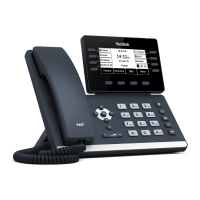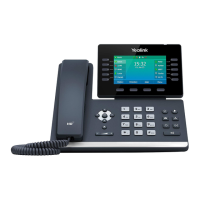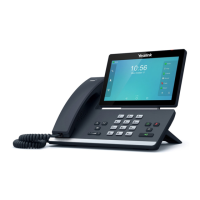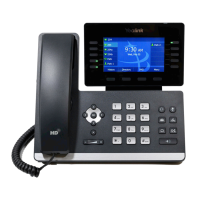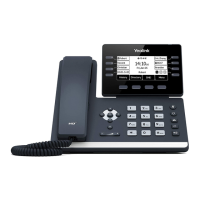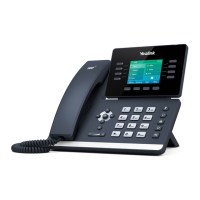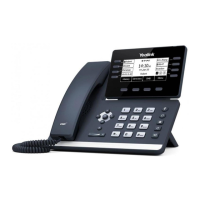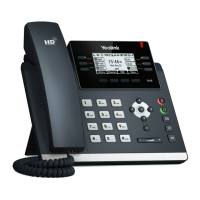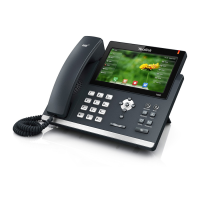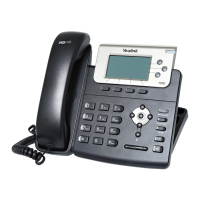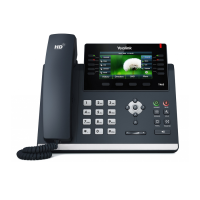Administrator’s Guide for SIP-T2 Series/T19(P) E2/T4 Series/T5 Series/CP860/CP920 IP Phones
790
To configure an XML Browser key via phone user interface:
1. Press Menu->Features->DSS Keys.
2. Select the desired DSS Key.
3. Press or , or the Switch soft key to select Key Event from the Type field.
4. Press or , or the Switch soft key to select XML Browser from the Key Type field.
5. (Optional.) Enter the string that will appear on the LCD screen in the Label field.
6. Enter the available access URL in the Value field.
7. Press the Save soft key to accept the change.
Enhanced DSS Keys
Enhanced DSS Keys (EDK) enables users to customize the functions of a phone’s DSS keys and
soft keys. You can use EDK to assign frequently used function to DSS keys and soft keys or to
create menu shortcuts to frequently used phone settings to suit your needs.
Application scenarios involve the following:
Adding new DSS keys or soft keys to simplify the operation of common telephony tasks
that may need more than one key press with the default configuration.
Removing certain default DSS keys or soft keys for functions that may be redundant or
never used.
The rules for configuring EDK for DSS keys and soft keys are different. Before using EDK, you
are advised to become familiar with the macro language. For more information, refer to
Understanding Macro Action Strings on page 791.
For more information on Enhanced DSS Keys, refer to
Using Enhanced DSS Keys on Yealink IP
Phones
.
Some Guidelines for Configuring Enhanced DSS Keys
The following guidelines will help you to configure EDK efficiently:
Activation of EDK functions requires valid macro construction.
“$” character delimits the parts of the macro string (except the digits only) and it must
exist in pairs. For more information, refer to Understanding Macro Action Strings on page
791.
Macros can be invoked in the format “!<
macro name
>”, where <
macro name
> is defined
by the parameter “edk.edklist.X.mname”.
If there are two or more same macros, the soft key or DSS key will invoke the macro with a
smallest value of X defined by the parameter “edk.edklist.X.mname”.
